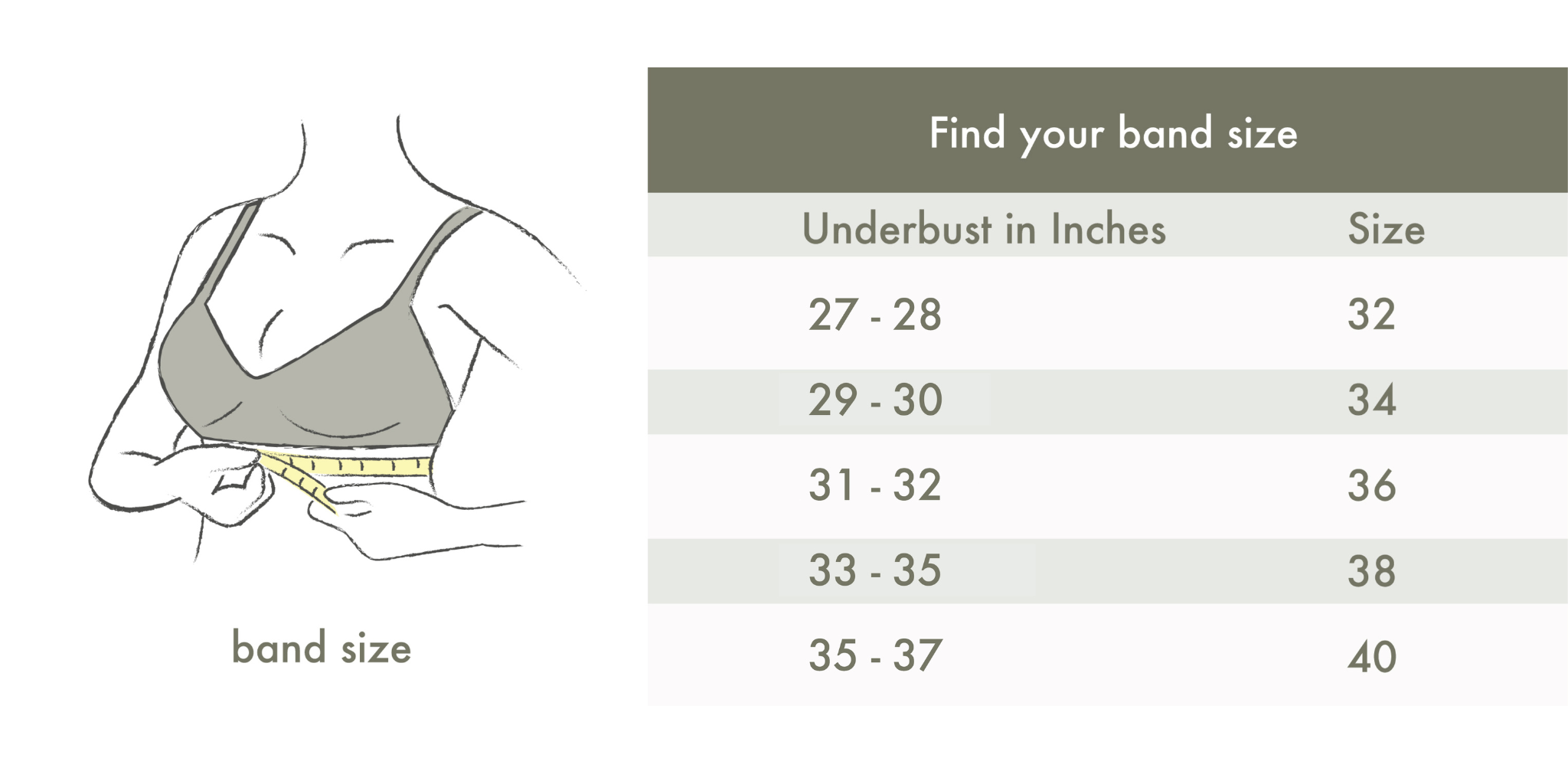How often are we stuck looking at bras online and not knowing which one is the right fit or size? Whether you’re a devout bra wearer or prefer to throw one on that you see fits, one thing is for sure is that your bra should always fit your body’s needs, not the other way around.
We get it, there are many online bra brands and conflicting information on what your perfect bra size is, so we thought we’d help you find out how to measure your bra size the right way.

Why is it important to have a well-fitted bra?
Wearing the wrong size bra can lead to a range of issues, from poor posture and neck pain to sagging.
How often should you get measured for a bra?
We suggest getting measured around every 6-12 months or when you’re looking to purchase a new bra. Even more so when your weight changes particularly during pregnancy.
How to measure bra size
What you’ll need:
-
A simple non-padded or thin padded bra (for the most natural look) so that your boobs are in the right position
- A soft measuring tape.
Let’s get started:
1. Measure your band size
a. Firmly but comfortably place the measuring tape around your ribcage or right underneath the band of your bra. Make sure it is level or parallel to the floor.
b. If you land on an even number this is your band size
c. If you land on an odd number, you’ll want to round up or round down to the nearest even number based on your build
-
Round down a band size if the under band is riding up / hiking back. This means the back is too big, so the breast will not be supported.
-
Round down a band size if the straps are too long or if you need to tighten your straps extensively
Round up a band size if the under band is digging in. This means the back is too small, so it will become uncomfortable to wear, in some case even to breath in or leaves marks on your skin.

Floatley Expert tips:
-
Did you know? 80% of breast support is aided by the core of your body. So always make sure the bra’s under band is parallel to the floor and should fit firmly when secured on the last hook
-
A good band size allows you to slide two fingers under the band once it is fastened
-
When wearing a firm band size, it will hold your boobs in place
As you wear and wash your bra, the fit will become looser, so you’ll want to move to the second hook to get a better fit and then finally to the tightest hook.

2. Measure your cup size
a. Place the measuring tape around the fullest part of your bust and make sure it is level
b. Your breast needs to rest in the cups, it should be comfortable and supportive.
c. Go up a cup size if you your breasts are overspilling, this means the cups are too small.
d. Go down a cup size if there is a gap between your breasts or around the edge of the cup, this means the cup may be too big.
3. Now it’s time to calculate your cup
a. BUST MEASUREMENT – UNDER BAND MEASUREMENT = CUP SIZE
b. Every inch equals one cup size
4. Determine your bra size
a. Take your band size and your cup size, put them together to get your bra size
b. Here’s an example: If you measure your band size as 34 inches and your cup size is 37 inches, the difference between the two is 3 inches. This means you have a C cup, and your bra size is 36C


5. Determine your fit
a. Straps:
-
Do not rely only on the straps to do all the support for you! Like the under band, they are an additional aid to support and customize the fit for a firm and secured look (without digging) so that the bra stays in place.
-
Round up a cup size
- If the straps are digging into your shoulders
- If the bra sits high even after adjusting the straps
Floatley Expert tips:
-
If the straps are falling off your shoulders, adjust the straps to fit comfortably. If this is still an issue, try choosing a narrow plunge bra or a cross back style. These types of design will help reduce the length of the strap.
-
If the bra sits high, check your strap and release some of it.
-
If the bra rides low, check your straps and tighten the hook – if this is still an issue, try the next size down
The straps should fit tight enough to avoid slipping off your shoulders but not too tight that they feel uncomfortable or dig into your skin
b. Side wings:
-
Check the side wings that sits beneath your under warm for no side boob or bulging of breast tissue.
Floatley Expert tips:
Bend forward and sweep / scoop all of side breast tissue toward the front
"Always remember it is always about playing with the elements of the bra!"

